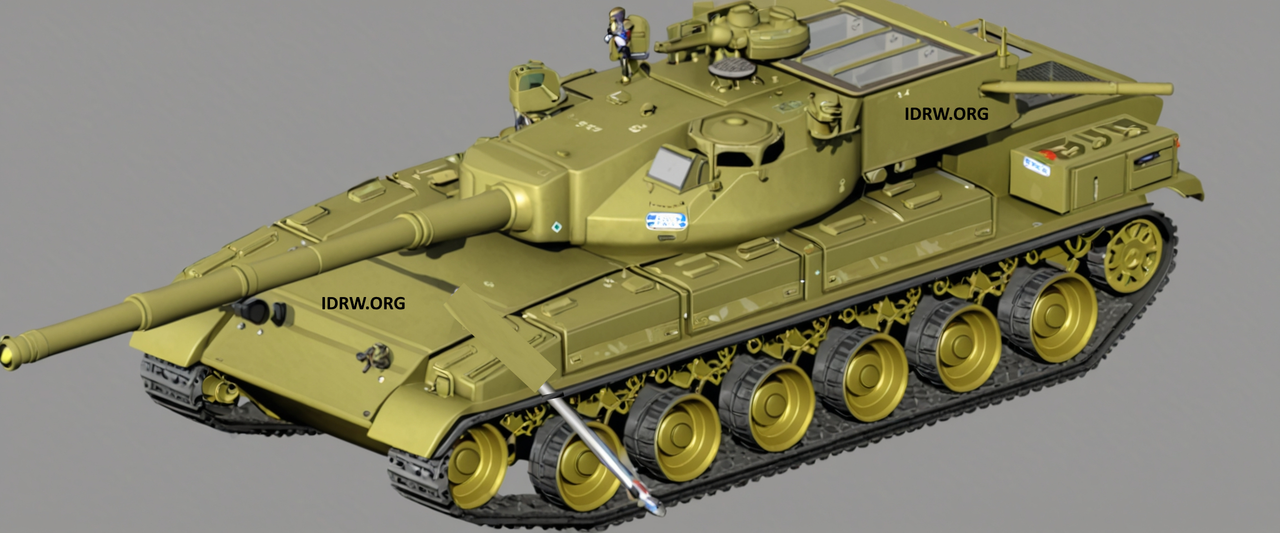SOURCE: AFI

India’s Future Ready Combat Vehicle (FRCV) program represents a critical step in modernizing the nation’s armored vehicle capabilities, aiming to replace the aging T-72 tanks with a more advanced Main Battle Tank (MBT) that can respond to current and future combat scenarios. While the FRCV is expected to include a 120mm gun, as used on most modern MBTs, there is a compelling case for exploring higher-caliber gun options, particularly as global trends in tank development lean toward increased firepower with calibers exceeding 120mm. Adopting a larger caliber could grant the FRCV a crucial edge in firepower, versatility, and combat effectiveness on the modern battlefield.
Over the past few years, there has been a growing interest among the world’s leading tank manufacturers in developing higher-caliber guns for MBTs. Countries including Germany, France, Russia, and China have explored or are actively working on tank guns with calibers larger than the traditional 120mm. These developments are driven by the need to enhance firepower against heavily armored adversaries, increase the lethality of MBTs, and address modern armor advancements that can defeat lower-caliber munitions.
Rheinmetall’s 130mm Gun: German defense manufacturer Rheinmetall recently introduced a 130mm gun, specifically designed for next-generation MBTs under the European Main Ground Combat System (MGCS) program. This 130mm gun, known as the Future Gun System (FGS), is designed to improve penetration capabilities and deliver greater kinetic energy on target compared to 120mm counterparts.
Russian 125mm Gun Upgrades and Potential 152mm Adoption: Russia has long relied on its 125mm tank guns, notably on T-14 Armata MBTs. However, Russia has shown interest in testing a massive 152mm gun, initially evaluated on prototypes like the Object 292 in the 1990s. Although the T-14 remains equipped with a 125mm, the development of a 152mm cannon could signal a shift in doctrine to favor maximum destructive power against advanced armored threats.
Chinese 125mm and Higher Caliber Experiments: The Chinese Type 99 MBT currently uses a 125mm gun, but China is reportedly testing higher-caliber weapons for future iterations to maintain a technological edge in the region. By potentially scaling up the caliber, China aims to boost its firepower capabilities against heavily armored opponents and fortified structures.
Reasons for India to Consider Higher-Caliber Guns in FRCV Development
Deterrence Factor: A high-caliber MBT would also act as a deterrent against adversaries in the region. Neighboring countries like China are investing heavily in upgrading their MBTs, and a superior firepower platform could serve as a psychological and strategic advantage for India in maintaining regional stability and deterrence.
Enhanced Armor Penetration and Lethality: A larger-caliber gun, such as a 130mm or even 140mm, can deliver significantly higher muzzle energy and improved armor penetration capability over the 120mm standard. With advanced reactive and composite armors becoming prevalent, the current 120mm rounds may soon struggle to effectively neutralize next-generation armored vehicles and hardened targets. A 130mm or 140mm gun on the FRCV would offer India the capacity to counter these advancements.
Increased Range and Impact on Fortified Targets: With a larger caliber, the FRCV would have a greater effective range and increased impact against fortified structures and heavily protected enemy positions. In urban or mountainous warfare, where fortified bunkers and structures can pose challenges, a higher-caliber weapon could provide Indian forces with more versatile, devastating firepower.
Future-Proofing Against Evolving Threats: As global military powers continue to innovate in armor technology, MBTs with larger calibers may become the new standard. By adopting a larger gun, the FRCV could be more adaptable to future threats, providing India with a weapon system capable of remaining competitive in an evolving global landscape of armored warfare.
By considering higher-caliber options for the FRCV, India could position itself as a pioneer in adopting next-generation tank technology, reinforcing its strategic autonomy and readiness to respond to a range of battlefield scenarios. This move would also reflect India’s intent to keep pace with, if not surpass, global military standards in armored warfare. As threats evolve, having a mainstay MBT equipped with a powerful, future-proof gun would provide a versatile asset capable of adapting to advancements in armor, countermeasures, and vehicle design.